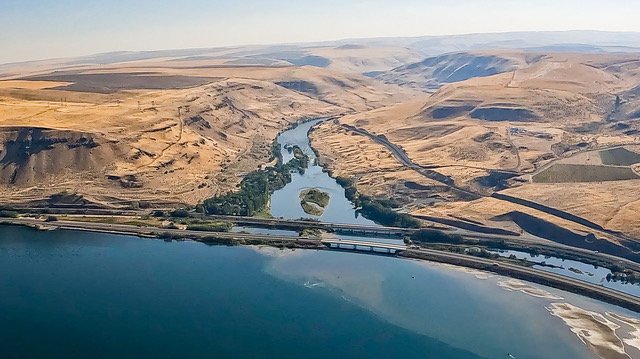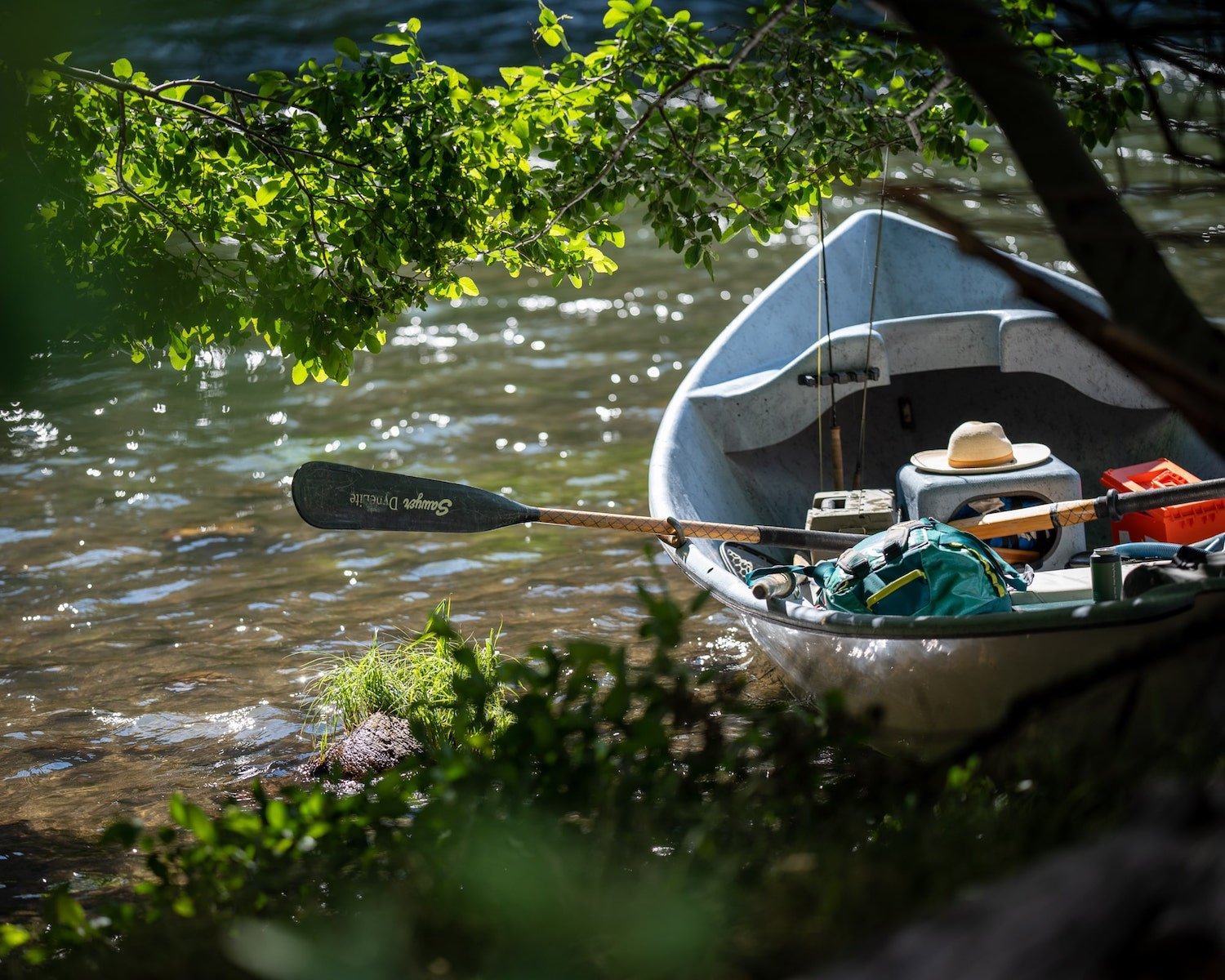The Vanishing Cold Water Refuge
Aerial image of the Deschutes River flowing into the Columbia River. Photo by Michael Peterson.
A Great Migration
Every spring, up to two million adult salmon and steelhead begin their homeward journey up the Columbia River. By the time the migration season is over in mid-October, 40 percent of them will encounter temperatures in the Columbia higher than 68 F., which can be lethal to them. When the mainstem Columbia gets too hot, these fish duck into tributaries that provide a cool refuge. Good science has affirmed that the lower Deschutes River is–or was–one of the most important of these cold water refuges. In addition to cooling off its native salmon, steelhead, and trout, the lower Deschutes is the last respite for salmonids returning further upstream, to home rivers as far away as the upper vasculature of the Salmon River in Idaho.
Licensed to Chill
Throughout the era of big mainstem dams, the historically cooler water of the Deschutes has provided a key refuge that benefits salmonids throughout the Columbia Basin. But Portland General Electric’s mismanagement of the lower Deschutes has severely diminished this indispensable cold water asylum.
In a 2021 report, the EPA identified 23 tributary cold water refuges in the lower Columbia basin. The agency recommended 12 of these refugia be managed to keep their waters as cool as possible, as key escapes from the mainstem Columbia, which, thoroughly dammed as it is, will continue to get warmer as the climate heats up. In the same report, EPA scientists identified the Deschutes as the most important cold water refuge of the designated dozen.
No Cold, No Quarter
But thanks to PGE’s operation of its Selective Water Withdrawal Tower, the vital cooling the Deschutes once reliably provided is at risk. Warm water released from the surface of Lake Billy Chinook makes the Deschutes three and a half degrees Fahrenheit warmer in May than it was in years prior to SWW operation. In some years, the Deschutes in spring and early summer has been warmer than the Columbia. Instead of cooling, the river’s high temperature opens the window of opportunity for non-native, predatory bass and walleye to begin moving into the lower Deschutes even before the heat of summer commences.
We know that current SWW operations are bad for the lower Deschutes. Surface water withdrawal from Lake Billy Chinook eight months out of the year warms the lower Deschutes during critical spawning and rearing periods for Chinook, steelhead, and bull trout. That warmer water is also laden with nutrients that spur excessive aquatic plant growth, including nuisance algae. What’s bad for the Deschutes, it turns out, is also bad for the future of anadromous fish throughout the Columbia Basin.
In its report, the EPA strongly urged states to pursue policies that would keep the cool water cool in these designated refuges. In 2020, the Oregon Fish and Wildlife Commission, to their credit, carved out several “Thermal Angling Refuges." These are cold rivers at their confluence with the Columbia, and in the very lowest reaches of the chilliest tributaries. But targeting steelhead and salmon taking a reprieve in the Deschutes isn’t even possible if the water is already too warm to provide any relief. So until the State of Oregon moves to get PGE into compliance with water quality standards, the lower Deschutes will be a cold water refuge in name only.
A cleaner, colder future
The water quality management plan PGE follows provides ample room for changes in operations that can be immediately implemented if standards are not being met. This summer, the DRA will provide several opportunities for those who care about the Deschutes to raise their voices and demand change, not only on behalf of Oregon’s most beloved rivers, but for the future of salmon and steelhead in the Columbia Basin. Stay tuned.
More From The Blog
Subscribe the the DRA Newsletter
The Deschutes River Alliance is your focused voice to protect the lower Deschutes River, its cold water flows and the fish and wildlife that are sustained by them. We send regular emails with important data and news about the lower Deschutes River. We will not sell or loan your contact information to others.
How to Support the DRA
Everyone wants clean, healthy water in the Deschutes River. Oregonians cherish our clean and healthy waterways to provide drinking water, wildlife habitat and recreational activities. The lower Deschutes River is a federally designated Wild & Scenic River, and a national treasure. It must be protected for the environmental and economic health of Central Oregon. We believe by working together we can return the lower Deschutes River to full health.






















